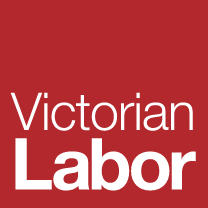The East Gippsland Catchment Management Authority will be able to ensure healthier and more sustainable waterways for fish for generations to come.
Member for Eastern Victoria Tom McIntosh today announced that the EGCMA will be one of the groups to benefit from the latest round of funds to boost habitat for a range of fish species in Victoria’s waterways through the Labor Government’s $2.5 million Fish Habitat Improvement Fund.
The EGCMA will receive $200,000 to increase woody habitat for black bream, estuary perch, and other native fish in the estuaries of the Mitchell, Nicholson, and Tambo rivers.
These estuarine reaches of the rivers provide critical spawning habitat for the Gippsland Lakes’ iconic black bream population. The project is in partnership with the Gunaikurnai Land and Waters Aboriginal Corporation as well as the Nicholson, Wy Yung, and Bairnsdale RSL angling clubs.
The grants provided up to $50,000 for recreational fishing groups and up to $200,000 for large-scale projects to support our state’s marine and estuarine environments and help fish shelter, feed and breed in freshwater.
Recreational fishing groups can still apply for grants of up to $50,000. To learn more visit vfa.vic.gov.au/fishhabitatfund.
Quote attributable to Member for Eastern Victoria Tom McIntosh
“I'm really proud of our continued improvements to fish habitat and the better fishing that comes with it."
Quotes attributable to Minister for Outdoor Recreation Steve Dimopoulos
“All these projects will make a real difference and provide better fishing and healthier aquatic ecosystems for many years to come.”
“We encourage recreational fishing organisations to apply for a grant and improve fish habitats in their local community.”
Quotes attributable to East Gippsland CMA Chief Executive Officer Bec Hemming
“This funding will go towards building on previous fish habitat work including the most recent in Jones Bay in the Gippsland Lakes where 32 structures were introduced.”
“Increasing underwater habitat is beneficial and provides shelter and food sources for native fish.”
“Aquatic invertebrates also benefit from these underwater structures, as do other species that rely on these invertebrates and fish as a food source.”



